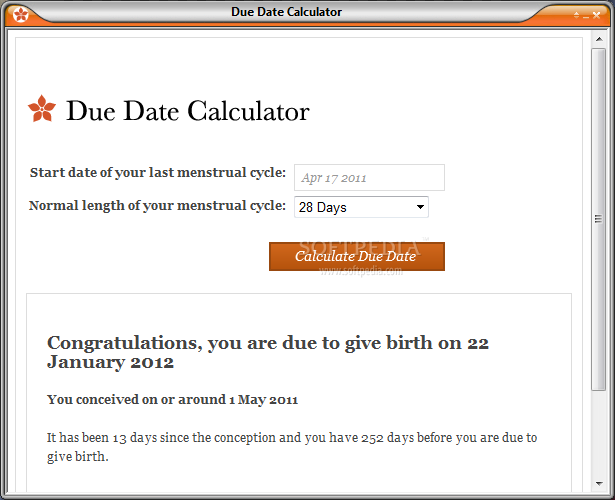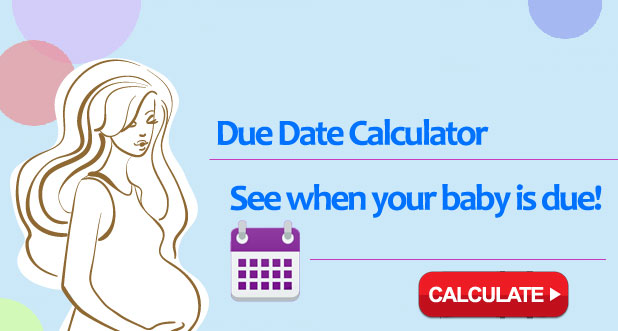


Another method is by adding 9 months and 7 days to the first day of the last menstrual period. The result is approximately 280 days (40 weeks) from the start of the last menstrual period. The rule estimates the expected date of delivery (EDD) by adding a year, subtracting three months, and adding seven days to the origin of gestational age. Naegele's rule is a standard way of calculating the due date for a pregnancy when assuming a gestational age of 280 days at childbirth. A study of singleton live births in the US came to the result that childbirth has a standard deviation of 14 days when gestational age is estimated by first trimester ultrasound, and 16 days when estimated directly by last menstrual period. Births rarely occur on a due date, but they are clustered around due dates. The median is merely a guideline for the day at which half of all births occur earlier, and half of all births occur later. Given that these gestation lengths are only estimates of an average, it is helpful to consider gestation time as a range of dates rather than as a single "due date". About 80% of childbirths occur between 37 and 41 weeks of gestational age, with a somewhat more narrow span when based on first trimester ultrasound. There is in any case considerable variation among individual pregnancies.ĭistribution of gestational age at childbirth among singleton live births, given both when gestational age is estimated by first trimester ultrasound and directly by last menstrual period. However, alternative durations as well as more individualized methods have also been suggested. Įstimation of gestational age at childbirth Ĭhildbirth on average occurs at a gestational age of 280 days (40 weeks), which is therefore often used as a standard estimation for individual pregnancies. Ultrasound measurement in the first trimester is generally considered to be the most accurate way to measure gestational age.In case of in vitro fertilization, calculating days since oocyte retrieval or co-incubation and adding 14 days.If the gestational age as calculated from an early ultrasound is contradictory to the one calculated directly from the last menstrual period, it is still the one from the early ultrasound that is used for the rest of the pregnancy. Early obstetric ultrasound, comparing the size of an embryo or fetus to that of a reference group of pregnancies of known gestational age (such as calculated from last menstrual periods), and using the mean gestational age of other embryos or fetuses of the same size.Directly calculating the days since the beginning of the last menstrual period.However, alternative durations as well as more individualized methods have also been suggested.Īccording to American Congress of Obstetricians and Gynecologists, the main methods to calculate gestational age are: Childbirth on average occurs at a gestational age of 280 days (40 weeks), which is therefore often used as a standard estimation for individual pregnancies. Adding the estimated gestational age at childbirth to the above time point.Such methods include adding 14 days to a known duration since fertilization (as is possible in in vitro fertilization) or by obstetric ultrasonography. This starting point is the woman's last normal menstrual period (LMP) or the corresponding time as estimated by a more accurate method if available. Determination of which time point is to be used as the origin for gestational age."Lying-in" or bedrest is no longer a part of antenatal care.ĭue date estimation basically follows two steps: This was believed to calm the mother and reduce the risk of premature delivery. Origins of the term Ĭonfinement is a traditional term referring to the period of pregnancy when an upper-class, noble, or royal woman would withdraw from society in medieval and Tudor times and be confined to their rooms with midwives, ladies-in-waiting and female family members only to attend them.

Children are delivered on their expected due date about 4% of the time. Normal pregnancies last between 38 and 42 weeks. The estimated date of delivery ( EDD), also known as expected date of confinement, and estimated due date or simply due date, is a term describing the estimated delivery date for a pregnant woman. Date on which a pregnant woman is estimated to give birth


 0 kommentar(er)
0 kommentar(er)
